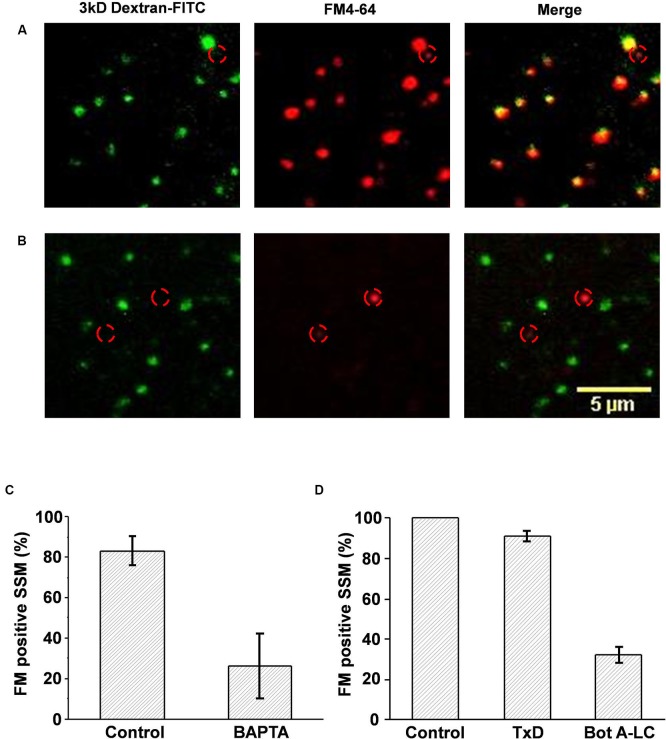Figure 3.
Cryoloaded compounds are functionally active. (A, B) Chick synaptosomes cryoloaded with plain FITC-dextran (A) or dextran with BAPTA (B) and then depolarized in the presence of FM4-64. In the absence of BAPTA all the cryoloaded (dextran positive, left panel) terminals also took up the styryl dye (middle panel), as shown in the overlay (right panel) demonstrating active SV recycling. As expected, one terminal that was not cryoloaded also took up dye (location indicated by red circle in all panels). BAPTA cryoloaded, dextran-positive synaptosomes did not take up FM4-64, demonstrating block of SV recycling. Note that non-cryoloaded neighboring terminals (identified by red circles) were styryl dye positive, confirming that recycling block was specific. (C) Histogram comparison of control, dextran-, or dextran/BAPTA-loaded SSMs that stained positive for SV recycling. (D) Histogram comparison of the number of SSMs that stained positive for FM4-64 after dextran-control, dextran/inactive Bot A toxoid, or dextran/active Bot A-LC cryoloading. FM uptake for each experiment was normalized to untreated controls. There was a marked reduction in the fraction of SSMs that stained for FM4-64 after Bot A-LC.

